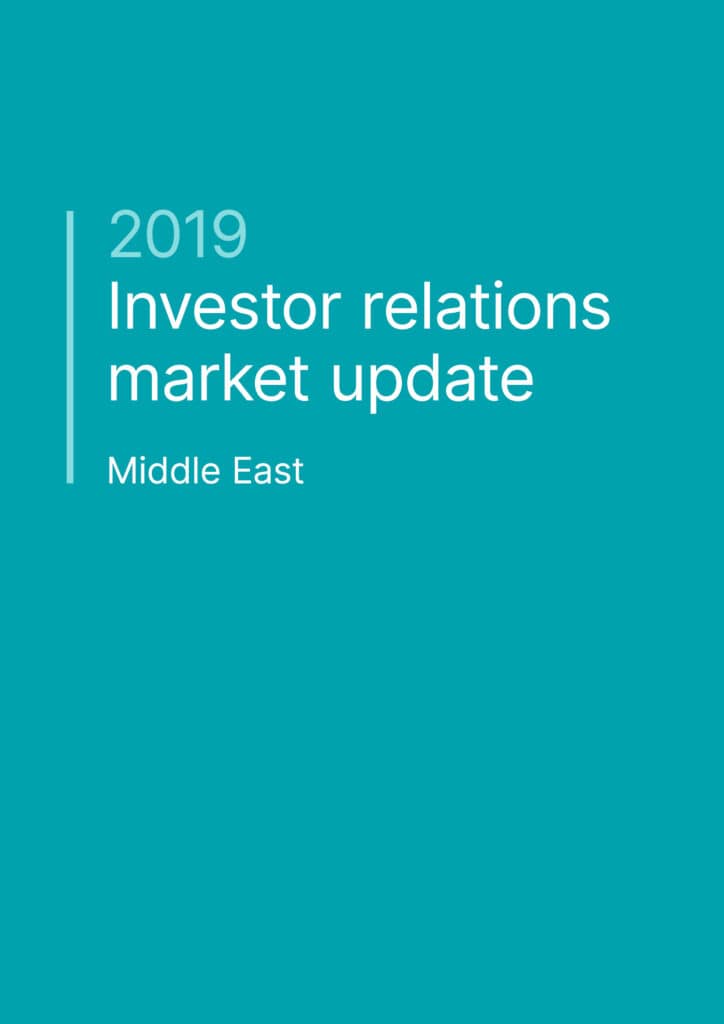Middle East | Investor relations market update 2019

The 2019 MEIRA practitioners report produced in conjunction with Carter Murray is a leading report in the region. It identifies the key opportunities and challenges facing the IR function, particularly given some of the changes in the Middle Eastern capital markets. In addition, the report looks at the survey results to identify trends in career backgrounds and aspirations, skills required and the remuneration of IR professionals. Below is a section of the report. To access the full report, please complete the form below.
It is always challenging to generalise ‘market health’ when talking about a market which includes 18 countries and a population that exceeds 400 million people by even the most conservative estimate. Broadly speaking however as with the global economy, the Middle East has seen minimal growth over the last 12 months. Within the Gulf Cooperation Council (GCC) most countries have struggled with low oil prices, this is compounded by tough trading in the retail and tourism sectors during the same time period. The clear exception to this is Saudi Arabia which has seen significant investment as part of Crown Prince Mohammad Bin Salman’s Vision 2030. This investment has been used to strengthen all non-energy sectors in the Kingdom.
There are also several causes for optimism, not least the increasing liberalisation of the Saudi market and upcoming major world events in the region. Expo 2020 in Dubai and the FIFA World Cup 2022 in Qatar will bring increased tourism and give local economies a boost. All Middle Eastern markets also continue to show improvements in governance and security for investors as the financial institutions mature. This is likely to improve foreign direct investment which has decreased from a peak of $126 billion in 2005 to $55 billion in 2017.
2019 has seen steady hiring numbers in the GCC, with Saudi Arabia being a market with substantial growth. Other markets are also improving on previous years and appear to be at an inflection point and heading back in the right direction following the tough trading highlighted above. Growth is back on the agenda and several sectors are leading the way notably technology and E-commerce. The former benefiting from strong government support for innovation, especially in Dubai. E-commerce is also gathering pace in the region. Many businesses with regional headquarters in the UAE are targeting emerging markets both within the Middle East and the wider MEA and Asia regions. It is important to mention the Construction and Real Estate sectors when discussing the Middle East and these appear to be addressing issues of supply and demand, achieving stability and in many cases growth.
To download the full report, complete the form below: